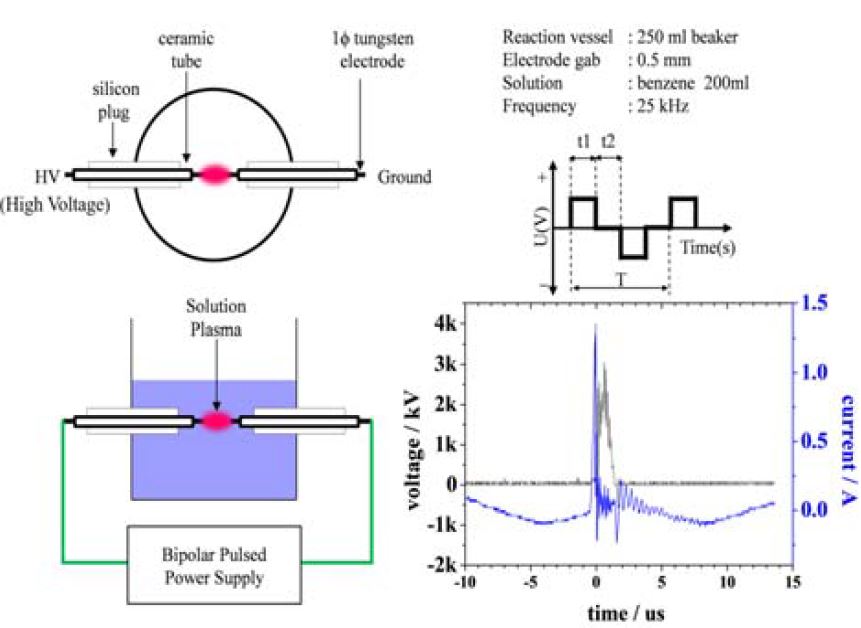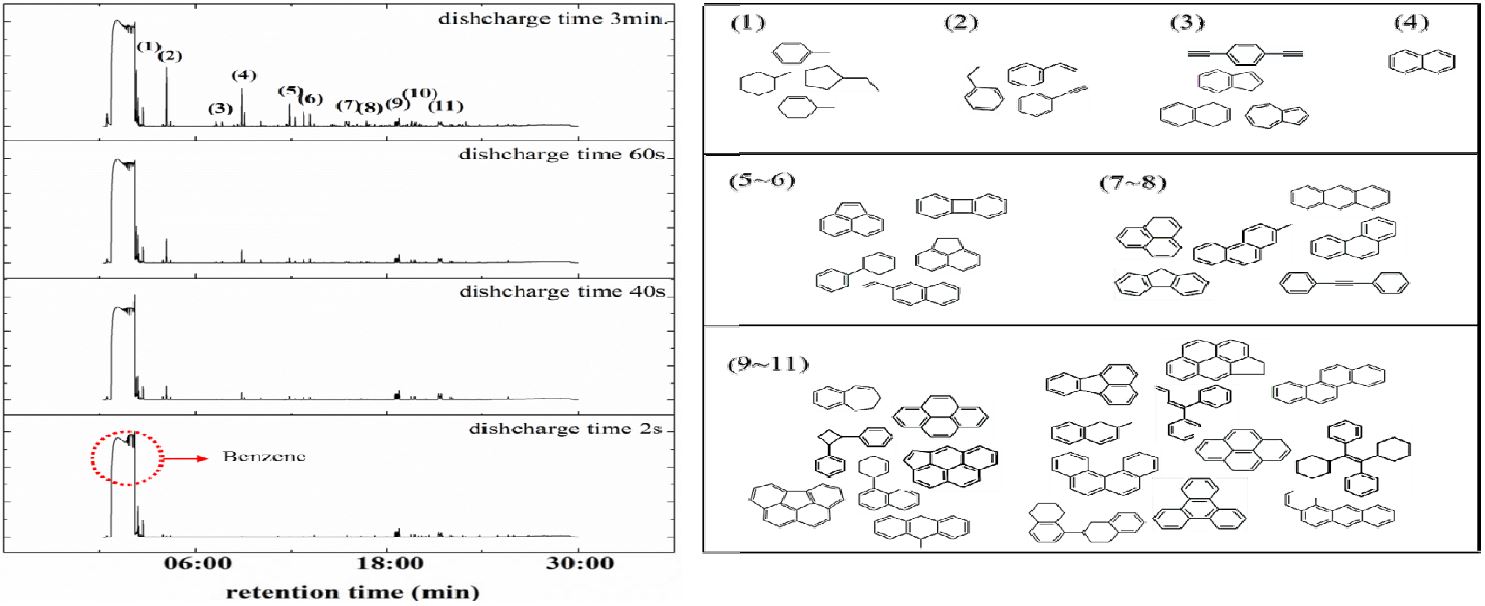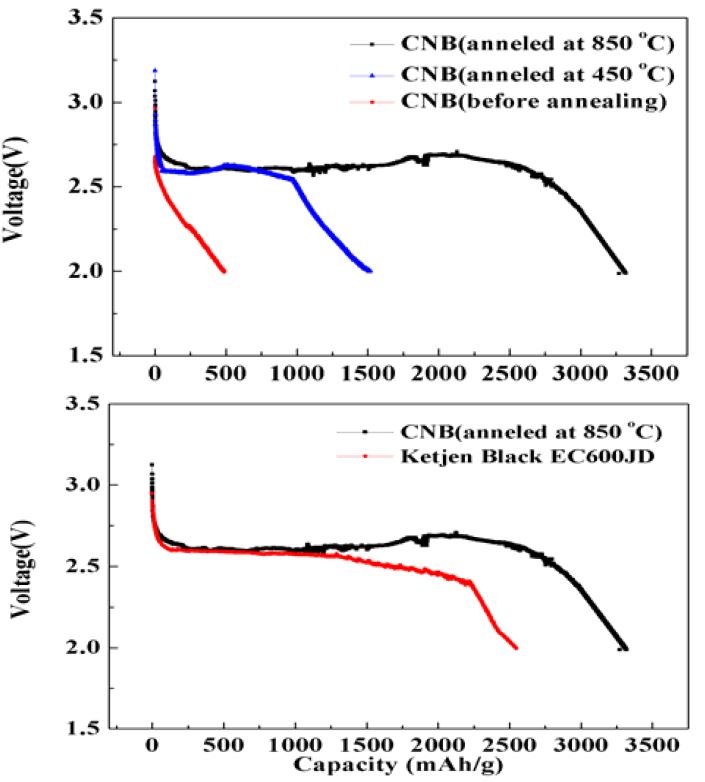
Carbon nanoballs: formation mechanism and electrochemical performance as an electrode material for the air cathode of a Li-air battery
Copyright ⓒ The Korean Society of Marine Engineering
This is an Open Access article distributed under the terms of the Creative Commons Attribution Non-Commercial License (http://creativecommons.org/licenses/by-nc/3.0), which permits unrestricted non-commercial use, distribution, and reproduction in any medium, provided the original work is properly cited.
Abstract
The Li-air battery is a promising candidate for the most energy-dense electrochemical power source because it has 5 to 10 times greater energy storage capacity than that of Li-ion batteries. However, the Li-air cell performance falls short of the theoretical estimate, primarily because the discharge terminates well before the pore volume of the air electrode is completely filled with lithium oxides. Therefore, the structure of carbon used in the air electrode is a critical factor that affects the performance of Li-air batteries. In a previous study, we reported a new class of carbon nanomaterial, named carbon nanoballs (CNBs), consisting of highly mesoporous spheres. Structural characterization revealed that the synthesized CNBs have excellent a meso-macro hierarchical pore structure, with an average diameter greater than 10 nm and a total pore volume more than 1.00 cm3 g-1. In this study, CNBs are applied in an actual Li-air battery to evaluate the electrochemical performance. The formation mechanism and electrochemical performance of the CNBs are discussed in detail.
Keywords:
Solution plasma processing, Li-air battery, Carbon material, Porous material, Carbon nanoballs1. Introduction
The Li-air battery is one of the most energy-dense electro-chemical power sources, with an energy density theoretically be equal to that of gasoline [1]. However, the actual Li-air battery energy performance is less than the theoretically estimated value, because the discharge products deposited on the surfaces of porous carbon materials in the air electrode blocks oxygen from diffusing completely into the reaction sites. Thus, the discharge is often terminated by a precipitate that blocks the pore entrance before the pore volume of the air electrode is filled with Li oxides - the discharge products. Hence, in a Li-air battery system, porous carbon materials have an important role due to their remarkably high oxygen diffusion rates.
Porous carbon materials can be classified according to their pore diameters as microporous (pore size < 2 nm), mesoporous (2 nm < pore size < 50 nm), and/or macroporous (pore size > 50 nm). However, in the case of micropores, the pore openings limit the diffusion of chemical species into the interior surfaces. In addition, in a non-aqueous Li in species into tis rechargeable, the pore entrance is easily blocked by the Li oxide discharge products. These products are not soluble in non-aqueous electrolytes and block the pores before the total pore volume in air electrode is fully filled. Therefore, the nanostructure of the carbon electrode might govern the performance of the Li-air battery.
Zhang et al. [2] indicated that the actual capacity of a Li-air battery is determined by the carbon air electrode, especially with respect to the pore volume available for the deposition of Li oxide, rather than the lithium anode. Yang et al. [3] suggest that pore diameters less than 10 nm are insufficient to maintain oxygen diffusion and accommodate the Li oxide during discharge. Therefore, the structure of carbon used in the air electrode is a decisive factor that affects the performance of Li-air batteries, especially the pore volumes and pores with diameters more than 10nm that are available for the deposition of discharge products[1][3].
In a previous study, we reported the large-scale synthesis of highly mesoporous carbon nanoballs (CNBs) by solution plasma processing (SPP) from benzene solution, without the need for a graphite electrode for carbon growth. The structural properties of CNBs were characterized by X-ray diffraction (XRD), transmission electron microscopy (TEM), scanning electron microscopy (SEM), laser Raman spectroscopy, and Brunauerareas by the laser f method. The results proved that the synthesized CNBs have an excellent pore structure and have potential for use as anode material for the Li-air battery.
In this article, the formation mechanism and the electro-chemical properties of CNBs are discussed in detail. In order to understand the chemical reaction by radicals in benzene solution, a detailed liquid analysis has been carried out by GCair eKetjen Black EC-600JD (KB, Mitsubishi Chemical, Japan), which demonstrated the highest capacity among commercial carbon materials, was used as the reference material to compare the electrochemical performance of our synthesized CNBs, and to identify the key performance factors. The discharge test results showed that this new type of spherical CNBs could be used in the next-generation porous materials for Li-air batteries.
2. Experimental Procedures
2.1 Preparation of carbon nano materials
The SPP reactor was connected to a bipolar pulsed power supply with tungsten electrodes and was operated for 30 min. The voltage, pulse frequency, pulse width, and electrode distance were: 1.6 kV, 25 kHz, 0.7μs, pulse frequency, pulse. A schematic of the SPP reactor is shown in Figure 1.
Heat treatment of CNBs was performed in a tube furnace with a 30 min dwell time under flowing Ar atmosphere at 850 °C
2.2 Preparation of Lithium-air battery
For cell performance comparison, Ketjen Black EC-600JD (KB, Mitsubishi Chemical, Japan), which has the highest capacity among many commercial carbon materials, was chosen. To fabricate the air cathode, 0.2g of CNBs and Ketjen black EC600JD was added to a mixture of 0.12 g of polyvinylidene fluoride (PVDF) and 10g of N-methyl pyrrolydone (NMP). Circular disks were prepared from sheets of high-porosity copper foam (1.4 mm thickness, 6000 g of N-methyl pyrrolidone (NMP)). wing Ar atmoMP/PVDF/Carbon slurry. The copper disc was sonicated for 20 min to enhance slurry penetration into the copper foam structure. To remove NMP, the cathodes were heated in a dryer at 110 odes were heated in into the copper foam structure. To rch carbon material was loaded on the copper foam, and the weight ratio to PVDF was 60 to 40. The electrolyte was 1 M LiClO4 in an ethylene carbonate/ propylene carbonate (EC/PC=1:1) solution. Lithium metal and nonwoven polypropylene fabric were used as the anode and separator, respectively. Type 2032 coin cell kits (Miclab, Japan) were used to fabricate cell devices, and the cap of the coin cells were drilled with twenty 1 mm pinholes. The Li-air cell was assembled in an argon-filled glove box. Before discharging, the air-cathode was soaked in the electrolyte for 5 min to permit permeation of the electrolyte into the carbon materials. The cells were discharged at a rate of 0.1 mA/cm2 and 2 V in an ambient environment.
3. Results and Discussion
3.1 Formation mechanism of CNB
In order to understand the chemical reaction by the radicals in benzene solution, a detailed liquid analysis was carried out by GC air electplasma process at time intervals of 2 s, 40 s, 60 s, and 3 min. All the intermediates that were identified by GC-MS are listed in Table 1. The nucleation process, where carbon atoms aggregate to produce larger spheres, is unclear. Kroto and Mckay proposed that nucleation begins from a pentagonal carbon ring, followed by spiral shell growth (Figure 2). The nucleation process can be considered to involve four stages: (a) nucleation of a pentagon, (b) growth of a quasi-icosahedral shell, (c) formation of a spiral shell carbon particle, and (d) growth of a large carbon sphere [4]. It is proposed that CNB formation occurs in a similar manner. In order to confirm the growth of a quasi-icosahedral shell (pentagonal, hexagonal, and heptagonal carbon rings) during the discharge, a GC method was used, and replicate samples were obtained after 5 s and 10 min of discharge. Figure 3 shows the gas chromatogram of a discharged solution and Table 1 shows the chemical identification of the peaks (by mass spectrometry) in the chromatogram displayed in Figure 3. Table 1 shows that benzene is found in the solution during the initial stage.
We now consider how the pores of CNB can be converted into mesopores with sizes of more than 10 nm. As shown in Figure 4, the porous properties of carbon black are governed by carbon aggregates and their agglomeration. Generally, the properties of carbon black aggregates can be understood by using the diffusion limited cluster aggregation (DLCA) model. Diffusion-limited aggregation (DLA), as proposed by Witten and Sander, is the process whereby particles go through a random walk due to Brownian motion, form clusters, and finally form aggregates of such particles. The clusters formed in the DLA process are referred to as Brownian trees. The Brownian trees generated from conventional plasma methods have numerous sprigs because the plasma simultaneously generates a large number of particles. Thus, there is probability of formation of mesopores smaller than 10 nm with a ramulose structure and a high degree of chaining (high structure in Figure 3). However, when using solution plasma, the plasma zone is very small and the Brownian trees formed are quickly, circulated by flux of solution. In addition, the void volume between the particles of the aggregates (intra aggregate voids) and that between individual aggregates is filled with liquid as soon as the Brownian trees leave the plasma zone. Therefore, the structures of the Brownian trees are simple, (i.e., the low structure in Figure 3) because of the insufficient growth time. For this reason, CNBs produced by the solution plasma method are mesopores.
3.2 Comparison of Electrochemical Performance
Voltage-capacity discharge experiments were carried out to evaluate the electrochemical performance of CNBs and were compared to KB performance (Figure 4). The performance of Li/air batteries are dependent on several factors, including carbon source, carbon loading, and electrolyte choice, and electrolyte volume [5][6]. Therefore, the experiments were carried out under identical conditions, as mentioned in the experimental section, excluding the carbon source.
The discharge capacity significantly increased with increasing annealing temperature because the number of electro-chemical sites that can react with oxygen increased by the improved conductivity. By comparison, the discharge profile in Figure 5 shows that KB-based micro-mesopores (less than 10 nm in size) having a large specific surface area, high pore volume, and high conductivity do not give a higher capacity battery than do the CNBs. These findings show that the critical factor for the high capacity is a good mesopore network (more than 10 nm) along with a large pathway for oxygen diffusion and a large pore diameter to prevent clogging of the pore entrances and afford the space to accommodate the deposition of Li oxide during discharge. Therefore, the structure of carbon in the air electrode is a critical factor that affects the performance of Li-air batteries. These features strongly imply that the CNBs have a suitable mesopore diameter with a large pore volume for the Li-air battery or fuel cell [7].
4. Conclusions
A new class of hierarchical structure, porous carbon material, carbon nanoballs (CNBs), was generated by a solution plasma process using benzene. Structural characterization revealed that CNBs have excellent an meso-macro hierarchical pore structure, with high pore volume. The discharge capacity of the CNBs reached 3600 mAhg-1, which exceeds the capacity of Ketjen Black EC-600JD (a commercial carbon black with highest cell performance) by 30-40%. These results show that our CNBs can be used in the next generation of electrode materials for Li-air batteries.
Acknowledgments
This study was supported by 2014 Korea Maritime & Ocean University research grant for new faculty.
References
-
I. Kowalczk, J. Read, and M. Salomon, “Li-air batteries: A classic example of limitations owing to solubilities”, Pure and Applied Chemistry, 79(5), p851-857, (2007).
[https://doi.org/10.1351/pac200779050851]

-
S. S. Zhang, D. Foster, and J. Read, “Discharge characteristic of a non-aqueous electrolyte Li/O2 battery”, Journal of Power Sources, 195(4), p1235-1240, (2010).
[https://doi.org/10.1016/j.jpowsour.2009.08.088]

-
X. H. Yang, P. He, and Y.Y. Xia, “Preparation of mesocellular carbon foam and its application for lithium/ oxygen battery”, Electrochemistry Communications, 11(6), p1127-1130, (2009).
[https://doi.org/10.1016/j.elecom.2009.03.029]

-
H.W. Kroto, and K. McKay, “Carbon onions introduce new flavour to fullerene studies”, Nature, 331(1988), p328.
[https://doi.org/10.1038/331328a0]

-
C. K. Park, S. B. Park, S. Y. Lee, H. Lee, H. Jang, and W. I. Cho, “Electrochemical Performances of Lithium-air Cell with Carbon Materials”, Bull. Korean Chem. Soc, 31(11), p3221-3224, (2010).
[https://doi.org/10.5012/bkcs.2010.31.11.3221]

-
J. Read, “Characterization of the Lithium/Oxygen Organic Electrolyte Battery”, Journal of the Electrochemical Society, 149, pA1190-A1195, (2002).
[https://doi.org/10.1149/1.1498256]

-
S. G. Park, "The Effect of Liquid Water in Fuel Cell Cathode Gas Diffusion Layer on Fuel Cell Performance", Journal of the Korean Society of Marine Engineering, 39(4), p374-380, (2015).
[https://doi.org/10.5916/jkosme.2015.39.4.374]







